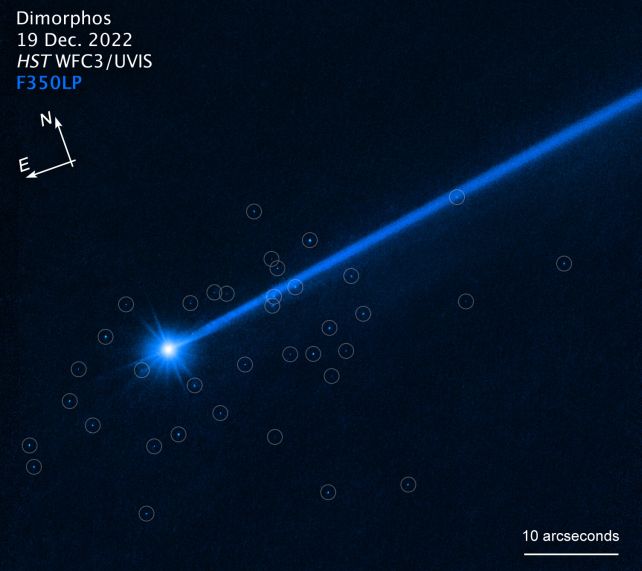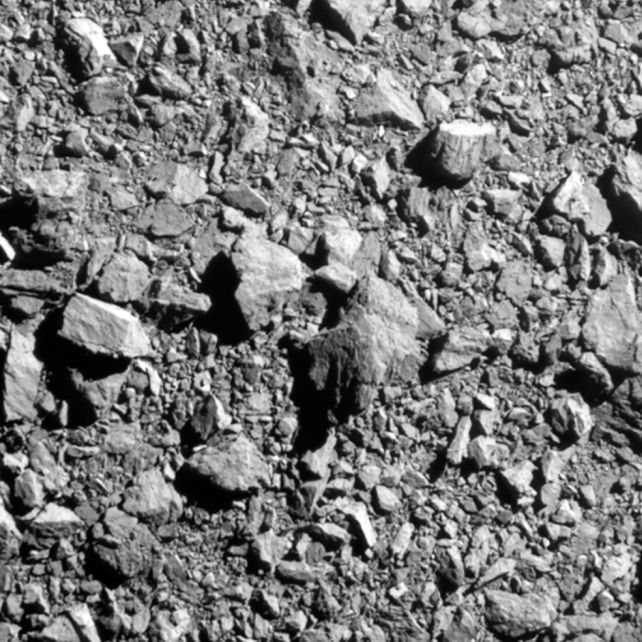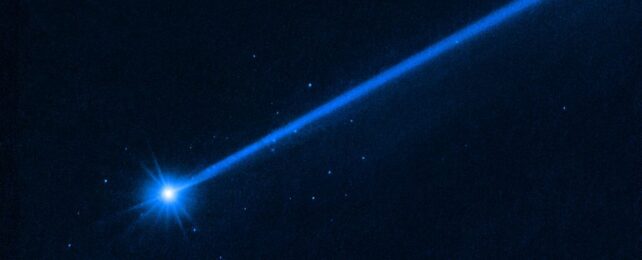A new observation reveals the ongoing effect humanity had after intercepting a chunk of rock drifting around the Sun last year.
In September 2022, NASA slammed a spacecraft into the asteroid Dimorphos. Hubble's latest observations show a giant swarm of boulders shaken loose by the impact, scattered like stars in the asteroid's wake.
The new images will help an upcoming mission to the asteroid study the results of the Double Asteroid Redirection Test (DART), to help refine and better plan for such impacts in the future.
"This is a spectacular observation – much better than I expected," says planetary scientist David Jewitt of the University of California at Los Angeles.
"We see a cloud of boulders carrying mass and energy away from the impact target. The numbers, sizes, and shapes of the boulders are consistent with them having been knocked off the surface of Dimorphos by the impact.
"This tells us for the first time what happens when you hit an asteroid and see material coming out up to the largest sizes. The boulders are some of the faintest things ever imaged inside our Solar System."

The DART mission might sound like a lot of fun (and let's be honest here, it was), but it had a very serious purpose. The aim was to try to knock Dimorphos slightly off its current orbit around larger asteroid Didymos, to test how capable we are of doing so in the possible event of a hazardous asteroid headed in Earth's direction.
The test was a tremendous success. Although Dimorphos and Didymos are still gravitationally bound as a binary asteroid, their previous 7.9-hour orbital period decreased by 33 minutes. That's a much more pronounced result than expected.
We still don't know a lot about the ongoing effects of the impact, though, so scientists are continuing to monitor the binary asteroid, using telescopes such as Hubble to detect the faint changes that might be missed by other instruments.
On 19 December 2022, Hubble took observations of the object that have just been released, showing a cloud of boulders scattered into space around Dimorphos and Didymos.
Scientists have counted 37 rocks, ranging in size from 1 to 6.7 meters (3 to 22 feet) across, slowly moving away from the asteroid at a rate of about 1 kilometer (0.62 miles) per hour.

Although the DART spacecraft smacked into Dimorphos at a speed of around 22,500 kilometers (14,000 miles) per hour, the rubble probably isn't broken-off asteroid chunks.
Prior to the impact, images from DART show loose boulders on the asteroid's surface; the impact likely knocked them loose, although precisely how is not yet known. The initial impact could have been responsible; or it could have created seismic tremors that knocked them loose later.
A spacecraft called Hera, launching in 2024, will be visiting the asteroid to study the results of the impact test.
"The boulder cloud will still be dispersing when Hera arrives," Jewitt says. "It's like a very slowly expanding swarm of bees that eventually will spread along the binary pair's orbit around the Sun."
Meanwhile, continued Hubble check-ins will help scientists calculate the boulders' trajectories away from the asteroid so we can figure out exactly where they launched from – which, in turn, could help us figure out how they launched in the first place.
You can download a wallpaper-sized version of the image from the ESA Hubble website, and a preprint paper on the research is available on arXiv.
